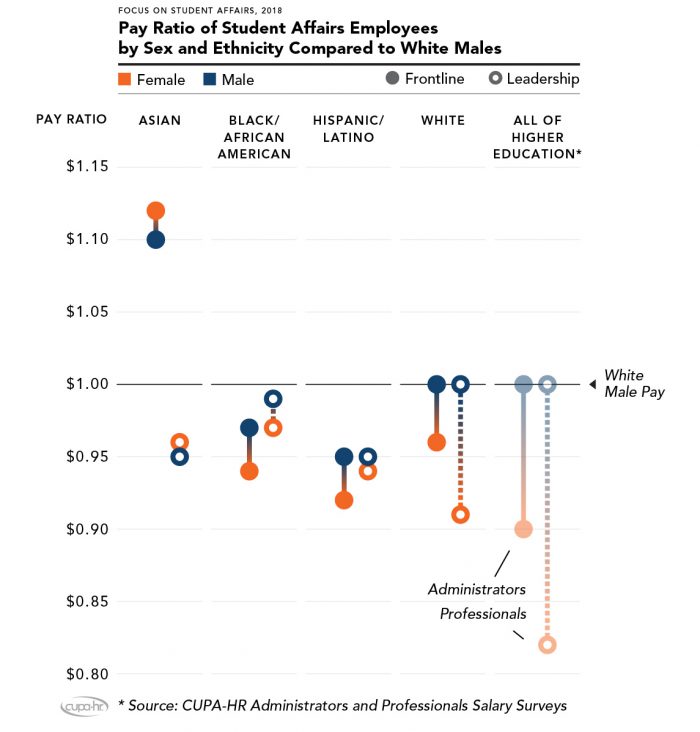Student Affairs: Ahead of the Curve on Workforce Diversity and Pay Equity
Student affairs has one of the most diverse workforces on college and university campuses today, particularly as it relates to women and African Americans in leadership positions. Student affairs is also exemplary for pay equity compared to the rest of higher education.
According to findings from CUPA-HR’s just-released research report Focus on Student Affairs, 2018: Understanding Key Challenges Using CUPA-HR Data:
- About 71 percent of student affairs positions are held by women, compared to only 58 percent among all higher education professionals.
- In student affairs, 56 percent of top officers are female, compared to only 51 percent among all higher education administrators.
While student affairs surpasses the rest of higher ed as a whole when it comes to pay equity for women and minorities, there’s still room for improvement, particularly among Hispanic women.

Diversity as It Relates to the Student Body
Student affairs professionals overall are representative of the students they serve, with the exception of the Hispanic population. Only 8 percent of student affairs professionals are Hispanic, while Hispanics comprise 17 percent of the student population today (according to the National Center for Education Statistics, this number is projected to grow to 20 percent by 2026).
Other Findings
Among the report’s other findings:
- The median starting age for student affairs professionals is 32 years old, the lowest of any other professional group in the higher ed workforce.
- Institutions employ a median of eight leadership positions and 14 frontline employees in student affairs, though these figures vary by size and classification.
Says Dr. Adam Pritchard, author of the student affairs report and senior survey researcher for CUPA-HR, “As higher education adapts to the challenges of serving college students with changing expectations, diverse demographics, less available financial aid and a landscape where higher ed institutions are increasingly tuition-dependent, having a plan for developing a diverse student affairs workforce with the right professional competencies is a key element in creating a thriving college or university that is ready for the future.”
Read the Focus on Student Affairs, 2018: Understanding Key Challenges Using CUPA-HR Data report and CUPA-HR’s research briefs.


